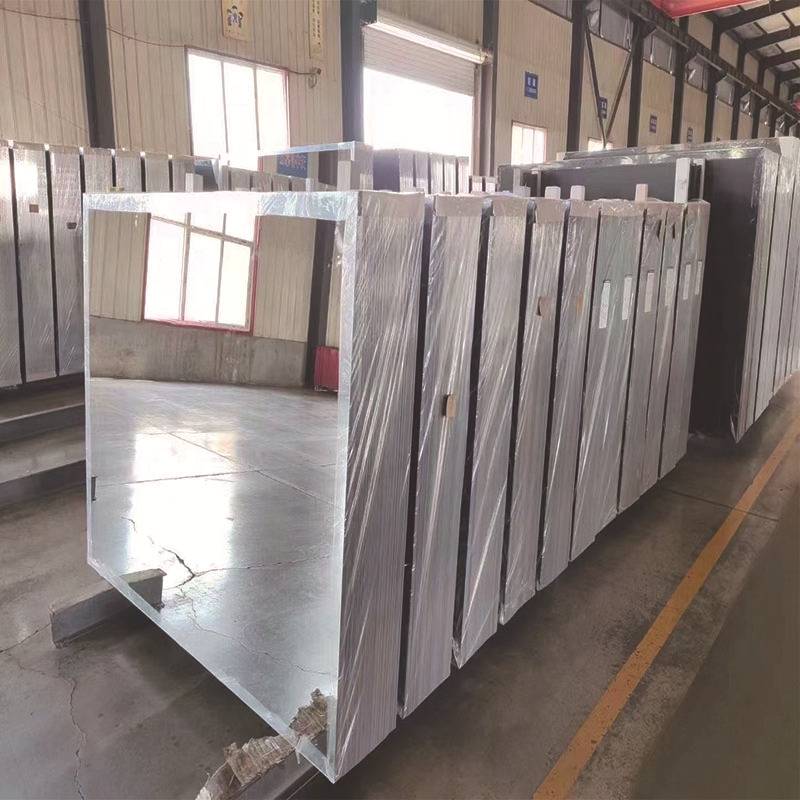Types of Glass Used in Architecture
Glass is a material that has played a crucial role in architectural design for centuries. Its aesthetic appeal, coupled with its functional properties, makes it an indispensable component of modern architecture. From residential homes to towering skyscrapers, the types of glass used in construction have evolved significantly, reflecting advancements in technology and design philosophy. This article explores various types of glass utilized in architecture, highlighting their unique characteristics and applications.
1. Float Glass
Float glass, one of the most common types of glass used in buildings, is produced by floating molten glass on top of molten tin. This process results in a flat, uniform sheet of glass that is transparent and free of imperfections. Due to its smooth surface, float glass is an excellent choice for windows, facades, and interior partitions. Its versatility allows it to be tempered or laminated to enhance safety and performance. Float glass provides clarity and excellent light transmission, making it a staple in both residential and commercial architecture.
2. Tempered Glass
Tempered glass is produced through a process of extreme heating and rapid cooling. This treatment strengthens the glass, making it much tougher than standard float glass. When broken, tempered glass shatters into small, blunt pieces, reducing the risk of injury. This safety feature makes tempered glass ideal for use in areas where safety is paramount, such as glass doors, shower enclosures, and balustrades. Its ability to withstand thermal stress and impact makes it suitable for a variety of architectural applications.
3. Laminated Glass
Laminated glass consists of two or more sheets of glass bonded together with an interlayer, typically made of polyvinyl butyral (PVB). This type of glass offers enhanced strength and safety; if broken, the interlayer holds the shards together, preventing them from falling and reducing the likelihood of injury. Laminated glass also provides sound insulation and ultraviolet (UV) protection, making it a popular choice for skylights, curtain walls, and glass facades in commercial buildings. Its aesthetic flexibility allows it to be tinted or frosted to meet design requirements.
types of glass used in architecture
4. Low-E Glass
Low-emissivity (Low-E) glass is designed to improve energy efficiency in buildings. It features a thin metallic coating that reflects infrared light while allowing visible light to pass through. This innovative design helps to maintain a comfortable indoor temperature by reducing heat loss in winter and minimizing heat gain in summer. Low-E glass is particularly beneficial for large windows and curtain walls, as it contributes to energy savings and enhances the overall environmental performance of a building. Many architects incorporate Low-E glass into their designs to promote sustainability and reduce energy consumption.
5. Insulated Glass Units (IGUs)
Insulated glass units (IGUs) consist of two or more panes of glass separated by a space filled with gas, typically argon or krypton. This design significantly improves thermal performance by reducing heat transfer between the interior and exterior of a building. IGUs are widely used in window systems and curtain walls, providing better insulation than single-glazed units. By effectively minimizing energy loss, insulated glass units contribute to the overall energy efficiency of buildings, making them a popular choice in modern architectural design.
6. Smart Glass
Smart glass, also known as switchable glass, is an innovative technology that allows the glass to change its properties in response to environmental conditions or electrical stimuli. This type of glass can switch from transparent to opaque or change its tint, providing privacy and controlling solar heat gain. Smart glass is particularly advantageous in high-tech buildings and smart cities, where energy efficiency and adaptability are vital. It is often used in offices and conference rooms, where privacy can be a concern without sacrificing natural light.
Conclusion
The integration of various types of glass in architectural design has transformed how buildings are conceived and constructed. From enhancing aesthetic appeal to improving energy efficiency, the role of glass is multifaceted and continues to evolve. As technology advances and sustainability becomes a priority, architects will likely explore new glass innovations that further redefine the possibilities of architectural design, allowing for more sustainable, beautiful, and functional spaces. Through the clever use of glass, the future of architecture promises to be bright and transparent.
 Afrikaans
Afrikaans  Albanian
Albanian  Amharic
Amharic  Arabic
Arabic  Armenian
Armenian  Azerbaijani
Azerbaijani  Basque
Basque  Belarusian
Belarusian  Bengali
Bengali  Bosnian
Bosnian  Bulgarian
Bulgarian  Catalan
Catalan  Cebuano
Cebuano  Corsican
Corsican  Croatian
Croatian  Czech
Czech  Danish
Danish  Dutch
Dutch  English
English  Esperanto
Esperanto  Estonian
Estonian  Finnish
Finnish  French
French  Frisian
Frisian  Galician
Galician  Georgian
Georgian  German
German  Greek
Greek  Gujarati
Gujarati  Haitian Creole
Haitian Creole  hausa
hausa  hawaiian
hawaiian  Hebrew
Hebrew  Hindi
Hindi  Miao
Miao  Hungarian
Hungarian  Icelandic
Icelandic  igbo
igbo  Indonesian
Indonesian  irish
irish  Italian
Italian  Japanese
Japanese  Javanese
Javanese  Kannada
Kannada  kazakh
kazakh  Khmer
Khmer  Rwandese
Rwandese  Korean
Korean  Kurdish
Kurdish  Kyrgyz
Kyrgyz  Lao
Lao  Latin
Latin  Latvian
Latvian  Lithuanian
Lithuanian  Luxembourgish
Luxembourgish  Macedonian
Macedonian  Malgashi
Malgashi  Malay
Malay  Malayalam
Malayalam  Maltese
Maltese  Maori
Maori  Marathi
Marathi  Mongolian
Mongolian  Myanmar
Myanmar  Nepali
Nepali  Norwegian
Norwegian  Norwegian
Norwegian  Occitan
Occitan  Pashto
Pashto  Persian
Persian  Polish
Polish  Portuguese
Portuguese  Punjabi
Punjabi  Romanian
Romanian  Russian
Russian  Samoan
Samoan  Scottish Gaelic
Scottish Gaelic  Serbian
Serbian  Sesotho
Sesotho  Shona
Shona  Sindhi
Sindhi  Sinhala
Sinhala  Slovak
Slovak  Slovenian
Slovenian  Somali
Somali  Spanish
Spanish  Sundanese
Sundanese  Swahili
Swahili  Swedish
Swedish  Tagalog
Tagalog  Tajik
Tajik  Tamil
Tamil  Tatar
Tatar  Telugu
Telugu  Thai
Thai  Turkish
Turkish  Turkmen
Turkmen  Ukrainian
Ukrainian  Urdu
Urdu  Uighur
Uighur  Uzbek
Uzbek  Vietnamese
Vietnamese  Welsh
Welsh  Bantu
Bantu  Yiddish
Yiddish  Yoruba
Yoruba  Zulu
Zulu 

